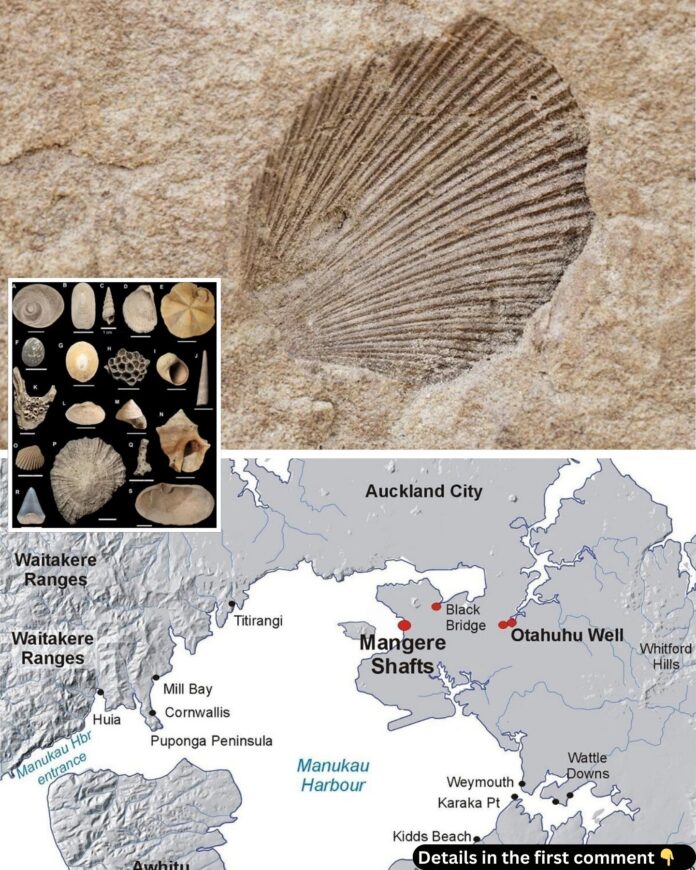In 2020, an infrastructure project in Auckland, New Zealand, unearthed a treasure trove of ancient fossils buried for over three million years. What began as a routine wastewater pipe upgrade soon transformed into one of the most significant paleontological finds in the country’s history. With 266 fossil species discovered, including at least ten previously unknown, this remarkable find provides an extraordinary glimpse into New Zealand’s prehistoric marine life and the biodiversity of a warmer, ancient world.
The Accidental Discovery Beneath the Streets of Auckland
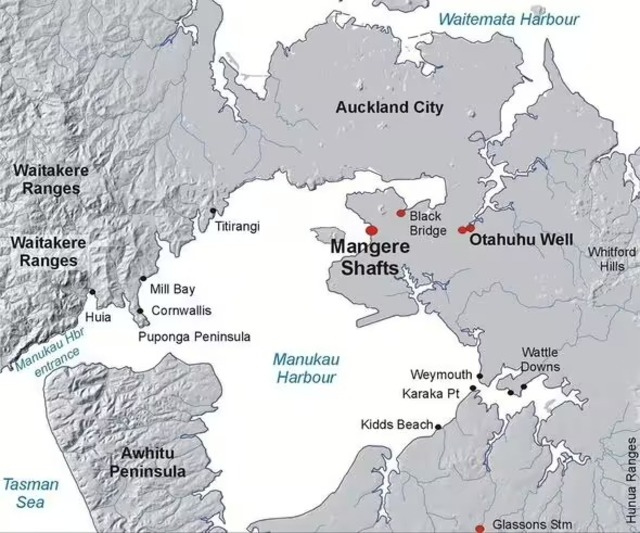
The discovery came to light during a pipeline upgrade conducted by Watercare, the utility company responsible for Auckland’s sewage infrastructure. As construction workers dug through layers of earth, they unexpectedly breached an ancient shell bed, revealing a wealth of fossilized remains. Recognizing the potential significance of their find, Watercare halted construction in the affected area and collaborated with paleontologists to preserve and study the fossils.
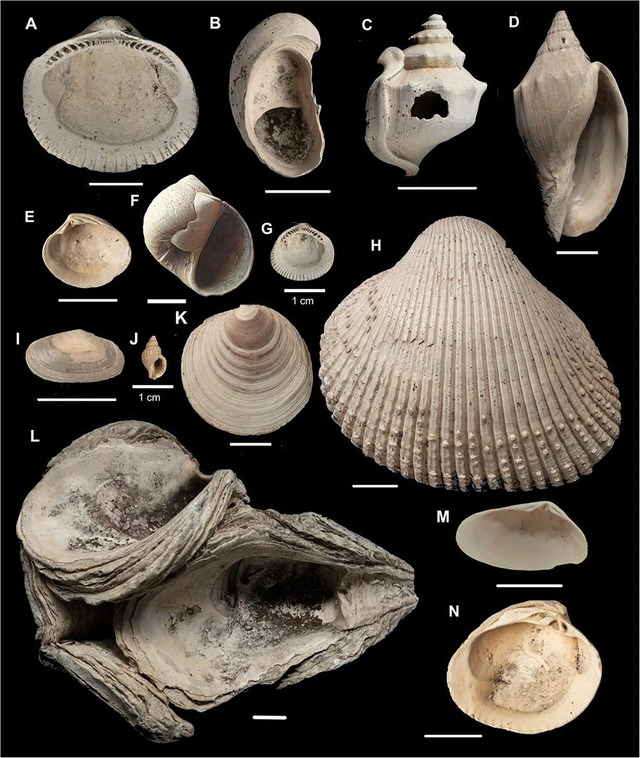
The excavation yielded a massive deposit of shelly sand, which was carefully transported to researchers for analysis. Over the course of several months, paleontologists meticulously sifted through the material, uncovering more than 300,000 individual fossils. Auckland Museum curator Dr. Wilma Blom, who led the study, praised Watercare’s support, noting that the utility company even funded two graduate students to assist with the research.
Video
Join the search for 500-million-year-old marine life fossils – watch the video to dive into the fascinating world of ancient sea creatures!
Reconstructing a Warmer Past
The fossils date back to a period between 3 and 3.7 million years ago, a time when the Earth’s climate was significantly warmer and sea levels were higher. This era coincides with the Pliocene epoch, a period marked by subtropical conditions in regions that are now temperate. The fossils were deposited in a subtidal channel, an ancient version of what is now the Manukau Harbour.
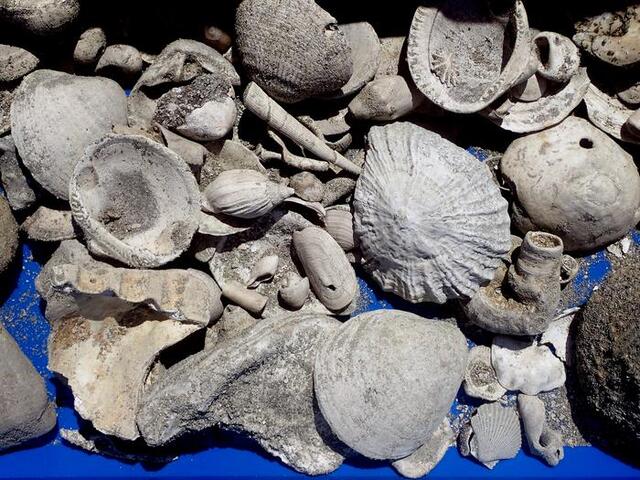
Among the fossils were numerous subtropical species, many of which have modern counterparts living in the warmer waters around the Kermadec and Norfolk Islands. Dr. Bruce Hayward, a prominent paleontologist, likened the discovery to “finding gold right on your doorstep.” The fossil collection not only represents the most diverse fauna of its age ever recorded in New Zealand but also highlights the region’s ancient ecological richness.
A Diverse and Remarkable Fossil Collection
The variety of fossils unearthed is staggering, encompassing species from multiple environments. Some specimens lived on the seafloor, while others originated from brackish estuaries, rocky shorelines, or offshore areas. The fossils were brought together in the subtidal channel by strong tidal currents and waves, creating an unparalleled snapshot of ancient marine life.
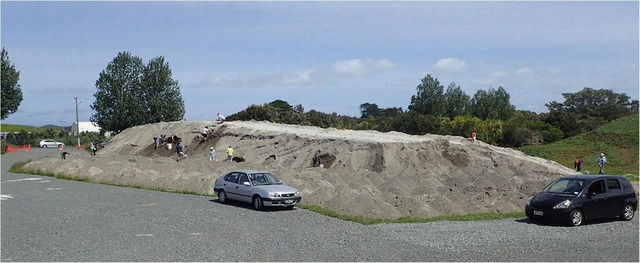
Among the collection are ten specimens of the iconic New Zealand flax snail, which are now recognized as the oldest flax snails in the world. These land-dwelling snails likely lived on adjacent land and were washed into the sea during storms. Other notable finds include isolated baleen whale vertebrae, a broken sperm whale tooth, the spine of an extinct sawshark, dental plates from eagle rays, and teeth from great white sharks. These rare and diverse fossils provide invaluable insights into the region’s geological and biological history.
New Species Awaiting Description
One of the most exciting aspects of the discovery is the identification of at least ten previously unknown species. Dr. Hayward and his team plan to describe and name these species in future research. This process will not only expand the scientific understanding of ancient biodiversity but also underscore the importance of preserving and studying accidental fossil discoveries during modern development projects.
The fossils also paint a vivid picture of life during the Pliocene epoch. Subtropical species thrived in the warmer waters, while land-dwelling creatures like the flax snail contributed to the ecosystem’s complexity. Together, these fossils provide a rare glimpse into the interconnectedness of ancient terrestrial and marine environments.
A Legacy of Research and Preservation
The study of this fossil treasure trove has been dedicated to the late Dr. Alan Beu, a leading expert in New Zealand’s molluscan fossils. Dr. Beu’s contributions to the field were instrumental in advancing the understanding of the region’s ancient biodiversity, and his legacy lives on through the ongoing research inspired by this discovery.
The fossils have been curated at the Auckland Museum, ensuring their preservation for future generations. Researchers have also published their findings in the New Zealand Journal of Geology and Geophysics, highlighting the global significance of the discovery. Plans are underway to further document the fossils and share the findings with the public through exhibits and educational programs.
Video
ake a glimpse at some of the 100 new deep-sea species discovered off the coast of Chile – watch the video to uncover the wonders of these newly found marine creatures!
Conclusion
The unexpected fossil discovery during Auckland’s wastewater pipeline project underscores the importance of integrating modern development with scientific exploration. This treasure trove, with its unparalleled diversity and new species, offers a unique window into New Zealand’s ancient past, revealing the region’s ecological richness during the Pliocene epoch. As researchers continue to study and describe these fossils, the discovery serves as a reminder of the enduring connections between humanity’s present and Earth’s distant past, inspiring curiosity and appreciation for the natural world.
